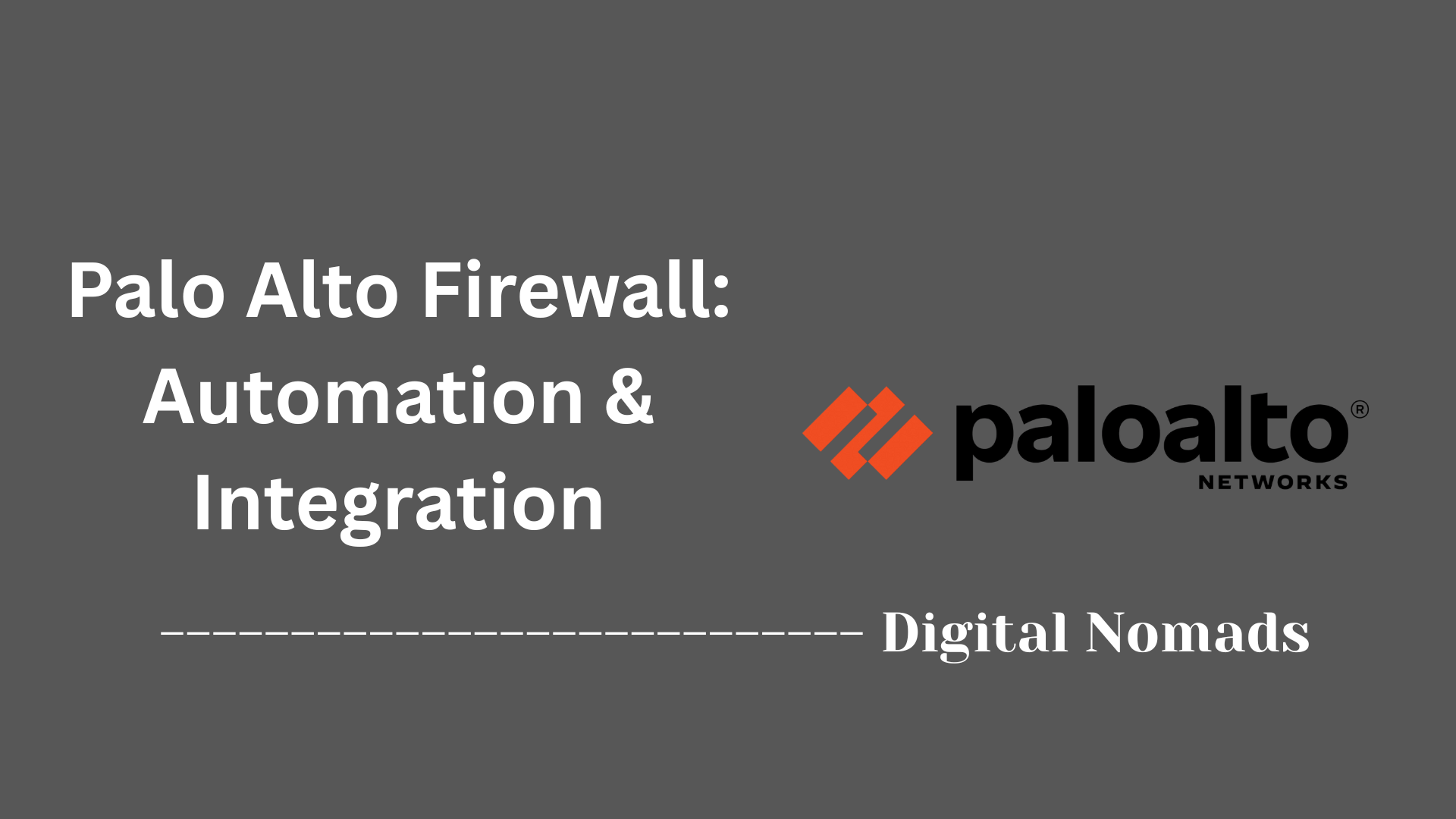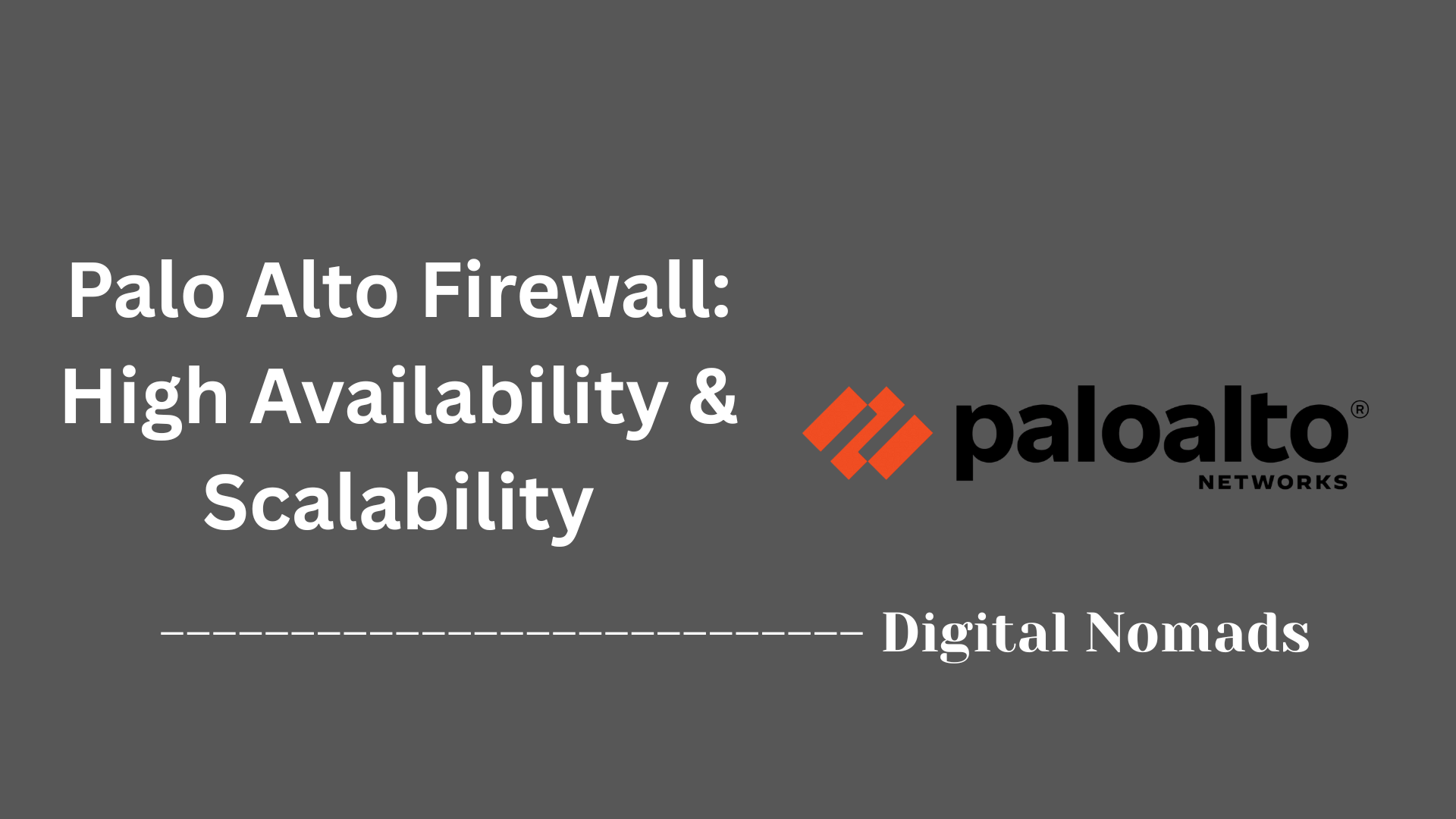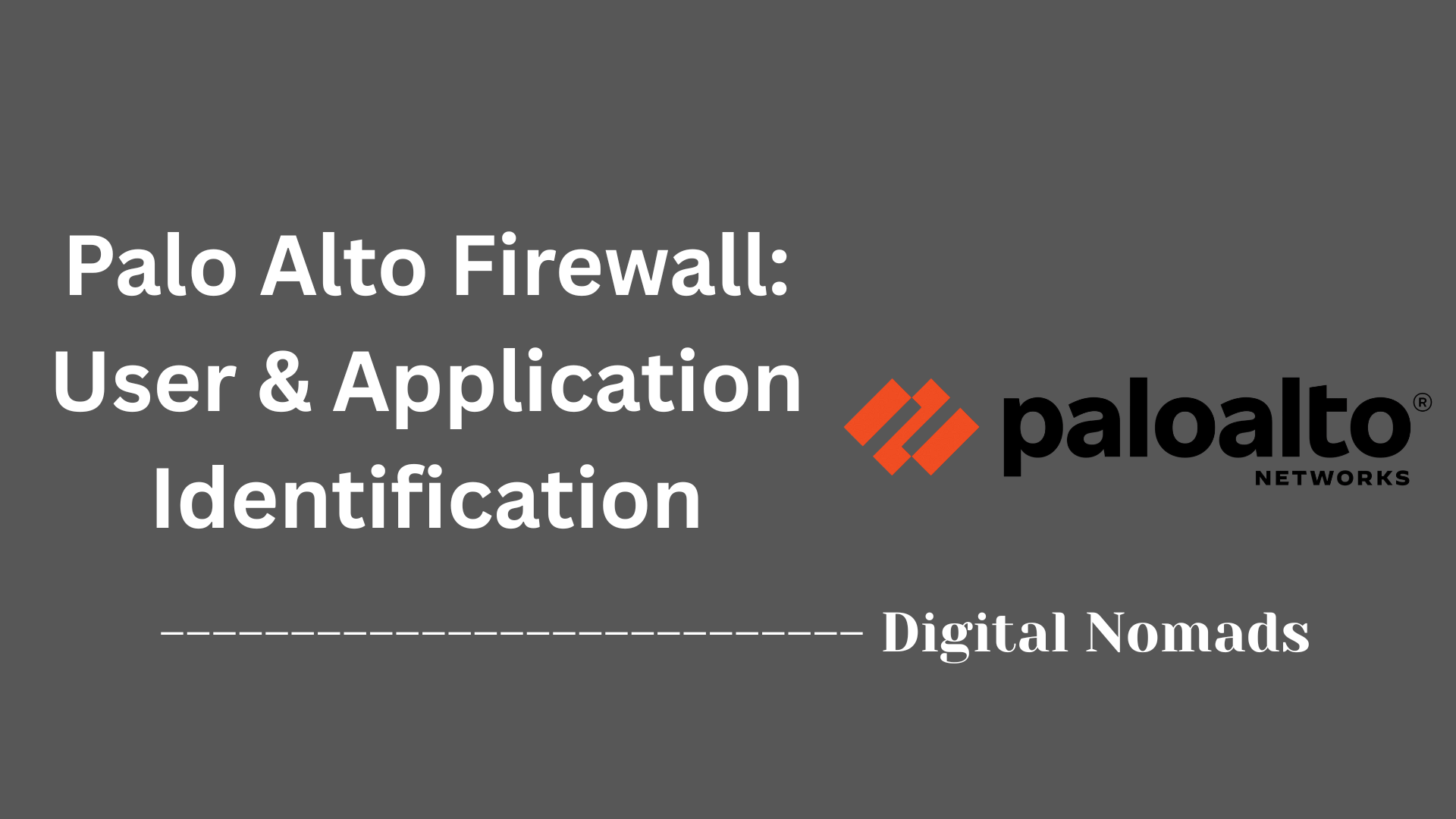Table of Contents
- Overview
- Palo Alto Firewall Onboarding
- Centralized Management with Panorama
- Advanced Panorama Capabilities
- Onboarding a Locally Managed Firewall into Panorama
- Troubleshooting & Best Practices
- Use Cases by Industry
- Conclusion
Overview: Onboarding and Centralized Management with Panorama
What Is It?
Onboarding and Centralized Management with Panorama refers to the process of integrating Palo Alto Networks Next-Generation Firewalls (NGFWs) into a unified management system—Panorama. Panorama is Palo Alto’s centralized management platform that allows organizations to oversee, configure, and monitor multiple firewalls from a single interface.
Why You Need to Know About It
- Simplified Operations: Managing multiple firewalls individually can be time-consuming and error-prone. Panorama streamlines operations by providing a single point of control for policy management, configuration, and monitoring.
- Consistency and Compliance: Centralized management ensures that security policies are applied uniformly across all devices, reducing the risk of configuration drift and supporting regulatory compliance.
- Scalability: As organizations grow, so does the number of firewalls and security appliances. Panorama enables organizations to scale their security infrastructure efficiently without losing visibility or control.
- Faster Response: Centralized visibility allows for quicker identification and remediation of threats, as administrators can respond to incidents across the entire network from one place.
- Operational Efficiency: Automation features and bulk operations reduce manual workload, freeing up IT and security teams to focus on strategic initiatives.
How It Works
- Firewall Onboarding:
- New or existing Palo Alto firewalls are registered and connected to Panorama.
- Devices are assigned to logical groups (device groups) and configuration templates for streamlined management.
- Centralized Policy and Configuration Management:
- Administrators create and manage security rules, NAT policies, and objects centrally.
- Policies are pushed to all relevant firewalls, ensuring consistent enforcement across the network.
- Monitoring and Visibility:
- Panorama provides dashboards and reporting tools for real-time visibility into network activity, threats, and device health.
- Logs and alerts from all managed firewalls are aggregated, making it easier to detect and investigate incidents.
- Automation and Integration:
- Panorama supports APIs and automation tools for integrating with external systems and automating repetitive tasks.
- Role-based access control ensures only authorized personnel can make changes or view sensitive data.
- Ongoing Management:
- Routine tasks such as software updates, configuration backups, and compliance checks are managed centrally.
- Troubleshooting and policy adjustments can be performed from the Panorama interface, reducing the need for on-site access to individual devices.
In summary, onboarding and centralized management with Panorama transforms firewall administration from a fragmented, manual process into a streamlined, scalable, and secure operation, supporting both day-to-day management and long-term security strategy.
Core Components of Palo Alto Firewall Onboarding
These are the fundamental elements required to successfully onboard a Palo Alto Networks firewall into centralized management with Panorama:
- Device Registration: The process of adding the firewall to the Palo Alto Networks support portal and activating the necessary licenses. This step ensures the device is recognized, supported, and ready for management.
- Initial Configuration: Assigning a management IP address, configuring basic network settings, and setting up administrative access. This prepares the firewall for secure communication with Panorama.
- Panorama Connection Setup: Specifying the Panorama management server’s IP address on the firewall and establishing a secure connection. This allows the firewall to be managed centrally and receive configuration updates.
- Device Groups & Templates: Organizing firewalls into logical groups and applying configuration templates from Panorama. This approach streamlines policy management and ensures consistency across multiple devices.
- Policy & Object Synchronization: Pushing security policies, NAT rules, and shared objects from Panorama to the firewall. This step centralizes control and enforces uniform security standards.
- Verification & Monitoring: Confirming that the firewall is visible in Panorama, configurations are synchronized, and logs are being received. Ongoing monitoring ensures the device remains compliant and operational.
Centralized Management with Panorama
Panorama is Palo Alto Networks’ centralized management platform, designed to streamline and unify the administration of multiple firewalls across physical, virtual, and cloud environments. Here’s a step-by-step overview of how centralized management with Panorama works:
- Unified Management Interface: Panorama provides a single web-based dashboard to manage all Palo Alto Networks firewalls, making it easier to oversee policies, configurations, and network activity from one place[1][2][4].
- Device Groups & Templates: Firewalls are organized into logical device groups and templates. This allows administrators to apply consistent security policies and configurations across multiple devices simultaneously, reducing manual effort and the risk of misconfiguration[2][4].
- Centralized Policy Creation & Deployment: Security rules, NAT policies, and objects are created centrally in Panorama and pushed to all managed firewalls. This ensures uniform enforcement of security standards and simplifies compliance management[1][4].
- Real-Time Monitoring & Visibility: Panorama aggregates logs and provides interactive dashboards for monitoring applications, threats, and device health across the entire network. Administrators can quickly detect, investigate, and respond to incidents[1][4].
- Automated Updates & Content Management: Panorama enables centralized management of software updates, content signatures (threats, applications, antivirus), and licenses, ensuring all devices remain up to date and protected[2][3].
- Role-Based Access Control: Administrators can assign granular permissions, ensuring that only authorized users can make changes or access sensitive information, supporting secure operations in large teams[1][4].
- Scalability & High Availability: Panorama can manage thousands of firewalls and supports high availability configurations, making it suitable for organizations of any size or complexity[1][2][4].
- API & Automation Support: Panorama provides robust APIs and automation capabilities for integrating with external systems and automating repetitive tasks, further increasing operational efficiency[2][4].
By centralizing firewall management with Panorama, organizations benefit from improved operational efficiency, consistent security enforcement, rapid threat response, and simplified compliance across all locations.
Advanced Panorama Capabilities
Panorama offers a robust suite of advanced features that extend beyond basic firewall management, empowering organizations with deeper visibility, automation, and integration options. Here’s a step-by-step overview of these advanced capabilities:
- Application-Layer Visibility: Gain detailed insights into application usage across your entire network. This allows for more granular policy enforcement and helps identify risky or unauthorized applications in real time[2][4].
- Threat Intelligence Integration: Seamlessly connect Panorama with external threat intelligence feeds and platforms. This integration enhances detection and response capabilities by correlating threat data and automating actions against emerging threats[4][12].
- Automated Incident Response: Leverage automation to trigger predefined actions based on security events, such as isolating compromised hosts or blocking malicious IP addresses. This reduces response time and improves overall network security posture[4][5].
- Custom Dashboards & Reporting: Create and personalize dashboards to visualize key indicators, monitor network health, and track threats. Custom reports can be generated and scheduled, providing actionable intelligence for compliance and operational needs[2][14][15].
- Cloud and Hybrid Support: Manage firewalls deployed in physical, virtual, and cloud environments from a single Panorama instance. This ensures consistent policy enforcement and simplifies administration across diverse infrastructures[2][4].
- API & Third-Party Integration: Utilize extensive APIs to integrate Panorama with SIEM, SOAR, and other security tools. This enables automated workflows, enhanced reporting, and streamlined operations[4][5].
- Advanced Log Correlation & Forensics: Analyze logs from all managed devices to identify complex attack patterns, support incident investigations, and generate forensic reports. This helps in quickly tracing the root cause of security incidents[2][4].
- Scalability & High Availability: Panorama can manage thousands of firewalls and supports high-availability deployments, making it suitable for enterprises of any size[2][4].
These advanced capabilities make Panorama a powerful platform for organizations seeking unified, automated, and intelligent security management across large and complex environments.
Onboarding a Locally Managed Firewall into Panorama
This step-by-step guide outlines how to migrate a Palo Alto firewall from local management to centralized management with Panorama:
-
Preparation & Planning:
- Determine which firewalls will be managed by Panorama and plan your device group and template hierarchy for consistent policy and configuration management.
- Back up the current configuration on the locally managed firewall for safety.
-
Add the Firewall to Panorama:
- In Panorama, navigate to Panorama → Managed Devices and click Add.
- Enter the serial number of the firewall and generate an authentication key if required.
- Commit the changes in Panorama to register the device.
-
Configure Panorama Settings on the Firewall:
- On the firewall, go to Device → Setup → Panorama Settings.
- Enter the Panorama management server’s IP address and the authentication key (if used).
- Commit the configuration to establish communication between the firewall and Panorama.
-
Verify Connectivity:
- In Panorama, check Managed Devices → Summary to ensure the firewall appears as connected.
-
Import Existing Firewall Configuration:
- In Panorama, go to Panorama → Setup → Operations and select Import device configuration to Panorama.
- Select the firewall, assign or create a template and device group, and import its configuration.
-
Review & Adjust Configuration:
- Audit the imported configuration for accuracy and resolve any conflicts or duplicate objects.
- Assign the firewall to the correct device group and template stack as needed.
-
Commit & Push Configuration:
- Commit changes in Panorama and push the configuration to the firewall to complete the transition to centralized management.
-
Monitor & Validate:
- Monitor the firewall in Panorama to confirm successful management and log collection.
- Verify that security policies and templates are applied as intended.
This process ensures a smooth transition from local to centralized management, providing unified control and visibility for your Palo Alto firewalls.
Troubleshooting & Best Practices
Effective troubleshooting and adherence to best practices are essential for maintaining a robust and reliable Palo Alto firewall deployment. Below is a step-by-step guide to common troubleshooting strategies and recommended best practices:
-
Initial Assessment:
- Check physical connectivity and ensure all cables and hardware components are properly connected and powered on.
- Verify that the firewall and Panorama are running compatible software versions.
-
Log and Status Review:
- Examine system and traffic logs in both the firewall and Panorama for errors or warnings.
- Use the Monitor → Logs section to identify failed connections, blocked traffic, or configuration errors[3][6][8].
-
Network Connectivity Checks:
- Test connectivity between Panorama and managed firewalls using ping or traceroute commands.
- Ensure management interfaces are correctly configured and reachable[6][9].
-
Policy & Configuration Validation:
- Review security policies and NAT rules for misconfigurations or conflicts.
- Check for template or device group commit errors in Panorama and resolve any conflicts before pushing changes[6][14].
-
Session & Traffic Analysis:
- Use the Session Browser and Traffic Logs to analyze active and historical connections.
- Leverage Packet Capture for deep analysis of problematic traffic flows[8][14].
-
Resource & Health Monitoring:
- Monitor CPU, memory, and disk usage on both firewalls and Panorama to prevent resource exhaustion.
- Check log storage capacity and clear or archive old logs as needed[6][12].
-
High Availability (HA) Troubleshooting:
- Verify HA configurations and ensure both peers are synchronized and reachable.
- Check for split-brain scenarios or failover issues and resolve configuration mismatches[12][20].
-
Certificate & Authentication Issues:
- Ensure all device and management certificates are valid and not expired.
- Review authentication profiles and user permissions for accuracy[6].
-
Commit & Push Troubleshooting:
- Investigate commit failures by reviewing error messages and system logs.
- Resolve object conflicts and ensure all variables are defined before pushing configurations[6][15].
-
Leverage Documentation & Community:
- Consult official Palo Alto Networks documentation and knowledge base for troubleshooting commands and procedures.
- Utilize community forums and support resources for additional insights and solutions[6][18].
Best Practices:
- Regularly update firewall and Panorama software to the latest stable releases.
- Use role-based access control to limit administrative risk and enforce least privilege.
- Schedule frequent configuration backups and periodic audits of policies and logs.
- Document all changes and maintain a clear change management process.
- Test new configurations in a lab environment before deploying to production.
By following these troubleshooting steps and best practices, you can ensure a resilient, secure, and efficiently managed Palo Alto firewall environment.
Use Cases by Industry
Palo Alto Networks firewalls and Panorama management provide tailored security solutions for a wide range of industries. Here’s a step-by-step look at how different sectors leverage these technologies:
-
Finance & Banking:
- Protects sensitive financial data and customer information with advanced threat prevention and Zero Trust policies.
- Supports compliance with regulations such as PCI DSS and SOX by enforcing consistent security controls and detailed audit trails.
- Enables secure branch connectivity and modernizes legacy infrastructure through SD-WAN and cloud integration[6][13][14].
-
Healthcare:
- Safeguards patient data and electronic medical records (EMR) against breaches and ransomware attacks.
- Secures Internet of Medical Things (IoMT) devices and remote care environments with centralized policy management.
- Automates threat detection and response to maintain HIPAA compliance and ensure uninterrupted care delivery[7][11][15].
-
Education (K-12 & Higher Ed):
- Protects student and staff data from cyber threats such as malware, phishing, and ransomware.
- Ensures compliance with regulations like CIPA and FERPA by controlling internet access and monitoring usage.
- Enables secure remote learning and digital collaboration with centralized security policy enforcement[12][16][20].
-
Manufacturing & Industrial:
- Secures Operational Technology (OT) networks and critical infrastructure from targeted cyberattacks.
- Implements Zero Trust policies for industrial control systems and remote access.
- Provides centralized visibility and automated response to minimize downtime and protect supply chains[13].
-
Other Sectors (Retail, Government, Service Providers):
- Retailers use firewalls to protect payment systems and customer data, supporting PCI DSS compliance.
- Government agencies secure confidential data and critical services with advanced segmentation and monitoring.
- Service providers deliver managed security services to clients, leveraging Panorama for scalable, multi-tenant management[2][9].
These industry-specific use cases demonstrate the flexibility and strength of Palo Alto Networks solutions in meeting unique regulatory, operational, and security needs across sectors.
Conclusion
Throughout this blog post, we’ve taken a comprehensive journey through the process of onboarding Palo Alto Networks firewalls and managing them centrally with Panorama. Here’s a quick recap of what we’ve covered:
- Core Components: We explored the essential building blocks of firewall onboarding, including device registration, initial configuration, Panorama connection setup, and policy synchronization.
- Centralized Management with Panorama: We learned how Panorama streamlines firewall administration by providing a unified interface for policy management, monitoring, and automation—ensuring consistency and efficiency across your security infrastructure.
- Advanced Panorama Capabilities: We highlighted powerful features such as application-layer visibility, threat intelligence integration, automated incident response, and support for hybrid and cloud environments.
- Onboarding Locally Managed Firewalls: We walked through the step-by-step process of transitioning a firewall from local to centralized management, ensuring a smooth migration and unified control.
- Troubleshooting & Best Practices: We discussed practical troubleshooting steps and best practices to maintain a resilient, secure, and well-managed firewall environment.
- Industry Use Cases: We saw how different sectors—finance, healthcare, education, manufacturing, and more—leverage Palo Alto Networks solutions to meet their unique security and compliance needs.
Key Takeaways:
- Centralized management with Panorama simplifies operations, reduces risk, and enhances visibility.
- Proper onboarding and consistent policy enforcement are critical for strong network security.
- Advanced features and automation empower organizations to respond quickly to threats and scale securely.
- Following best practices and learning from industry-specific use cases can maximize the value of your investment in Palo Alto Networks solutions.
Thank you for joining us on this deep dive! Whether you’re just starting your journey with Palo Alto firewalls or looking to optimize your existing deployment, we hope this guide has provided valuable insights and actionable steps. If you have questions or want to share your own experiences, feel free to leave a comment or reach out. Stay secure and happy managing!




